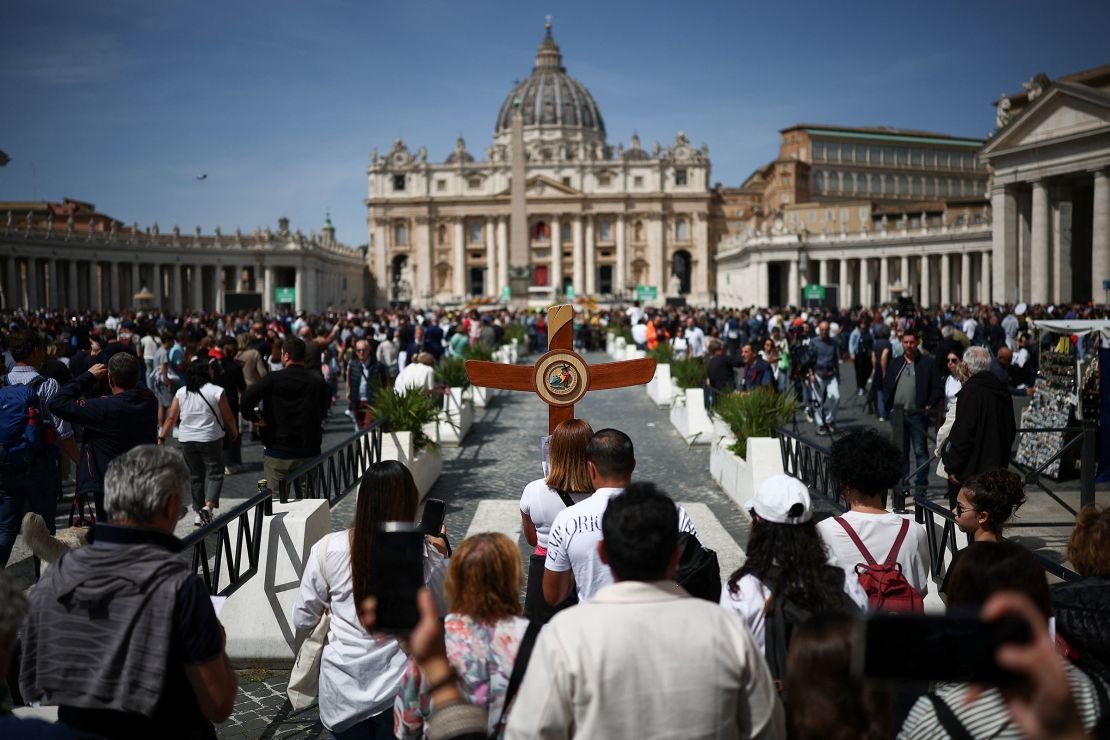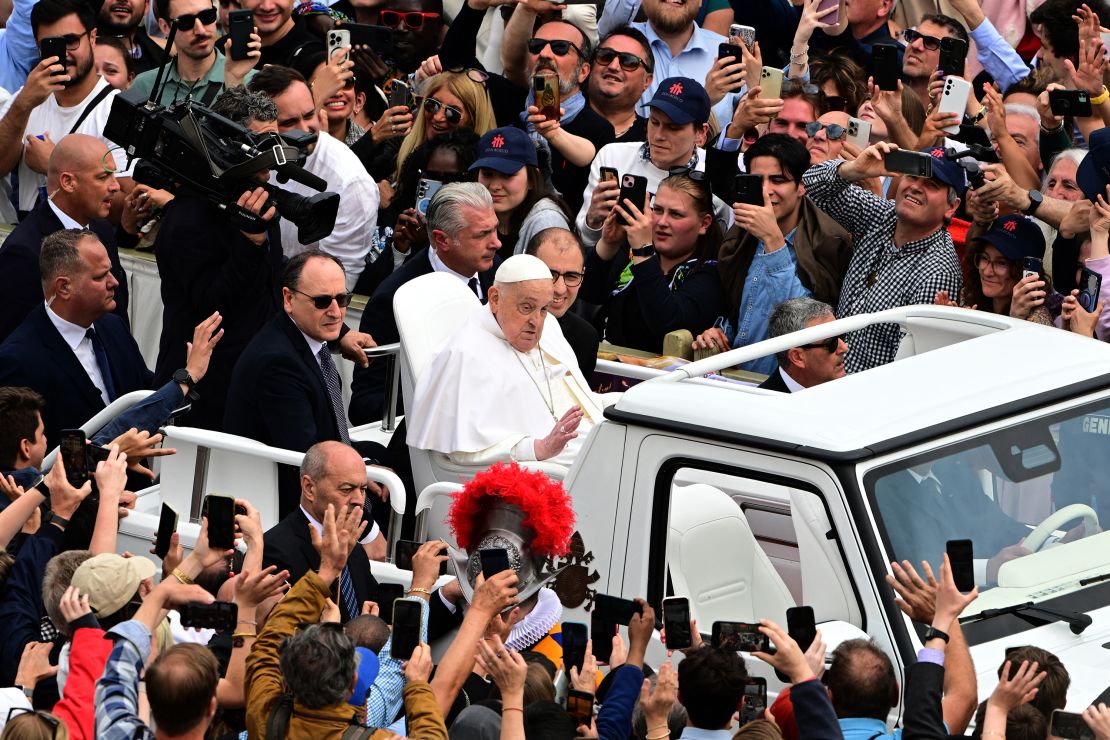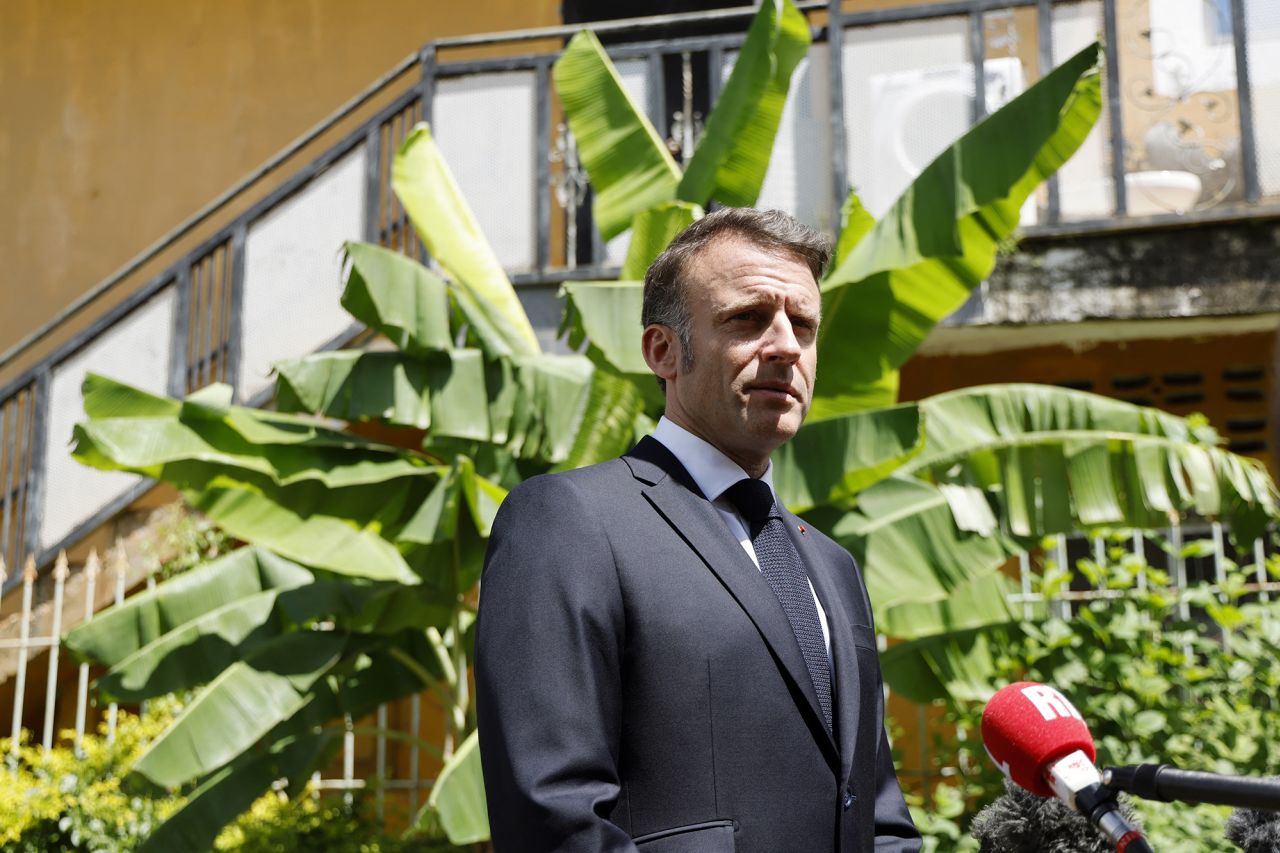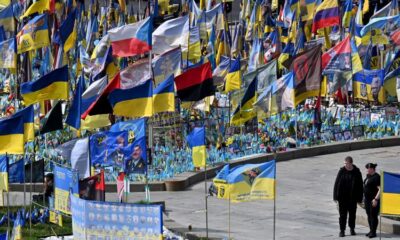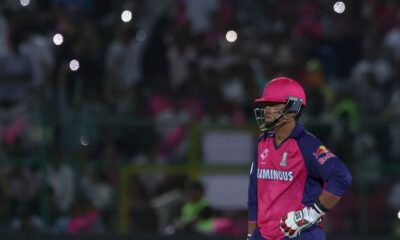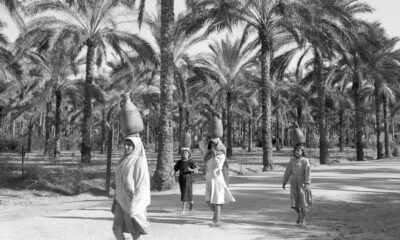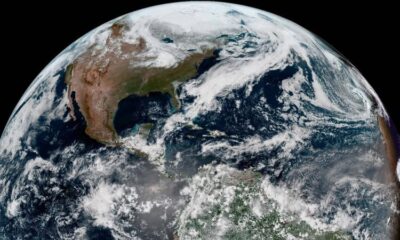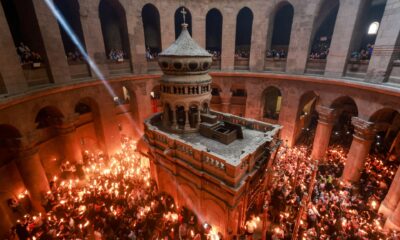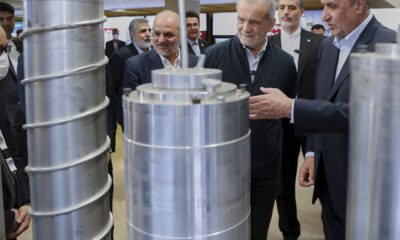CNN
—
Vice President JD Vance on Friday made the highest-profile case to date for American control of Greenland during a controversial visit to the semiautonomous island, which its residents had resisted and its leaders said was unwelcome.
“We want to have good relationships with everybody,” Vance said during a visit to an American military installation high above the Arctic Circle. “But part of having good relations is showing your strength when you have to.”
It was the clearest message yet to Greenlanders who have been watching with anxiety as President Donald Trump vows to acquire their land “one way or another.” Vance, who only decided in the last few days to make the trip, said Denmark had neglected its territory and that America could no longer ignore Russian and Chinese alleged designs on the island.
“Our message to Denmark is very simple,” Vance said. “You have not done a good job by the people of Greenland.”
He repeatedly claimed the island was vulnerable and that the United States had “no other option” than to ramp up its presence there.
Greenland would be better off “coming under the United States’ security umbrella than you have been under Denmark’s security umbrella,” he said, saying it was the “policy of the United States” to see changes to the island’s Danish leadership.
Still, he acknowledged the future of the island should be up to its residents.
JD Vance accuses Denmark of neglecting Greenland
JD Vance accuses Denmark of neglecting Greenland
01:38
“Yes, the people of Greenland are going to have self determination. We hope that they choose to partner with the US because we’re the only nation on earth that will respect their sovereignty and respect their security, because their security is very much our security,” he said.
Vance’s visit was a very different trip than the cultural foray White House officials had originally planned for his wife, second lady Usha Vance.
Instead of viewing a dog sled race as she had originally planned, the Vances visited the US Space Force outpost at Pituffik, on the northwest coast of Greenland, 1,000 miles from the capital of Nuuk. Miles away from any civilian population center, they were greeted by enthusiastic troops in the sub-freezing weather.
“It’s cold as sh*t here!” Vance exclaimed when he arrived.
What the White House initially characterized as a visit by the second lady to learn more about the culture of the island, quickly became contentious earlier this week – with the outgoing leader of the semiautonomous Danish territory Múte Egede describing it as “highly aggressive.”
As JD Vance watched the outrage over his wife’s trip grow, he decided to join her, a senior White House official told CNN on Thursday.
“It was a combination of a little bit of commotion from Danish leaders combined with Vance wanting to go for a while,” said the official.
“I decided I didn’t want her to have all that fun by herself and so I’m going to join her,” Vance said in a video announcing his participation earlier this week.
Vance’s 11th-hour decision elevated the US delegation visit, with the vice president becoming the highest-ranking US official to visit Greenland, and in so doing, traveling further north than any senior American leader has ever gone on an official visit, the White House official said.
But the shortened trip also carried a more overtly militaristic tenor and kept the American visitors sequestered away from any planned protests.
Vance’s first trip abroad – to conferences in Paris and Germany – was notable for his tough rhetoric about Europe, a viewpoint reinforced by his texts revealed this week in a private Signal chat about military action in Yemen. His message on this second trip overseas struck a similar tone.
The visit to the American military base avoided any potentially embarrassing incidents between the Vances and either members of the public or government officials, many of whom openly spoke out against Usha Vance’s original plans.
Protests had been planned in the capital Nuuk, where about a third of Greenlanders live, and Greenland’s second largest city Sisimiut, where the dog sled race is taking place.
“Trump’s talk of annexation and the visit of the Vances has united Greenlanders in defiance, with Greenlanders rallying together to protest,” Dwayne Ryan Menezes, director of the UK-based think tank Polar Research and Policy Initiative, told CNN in an email.
“The Vances clearly realised that if they visited Nuuk or Sisimiut, the strategy would backfire even more than it has: it would be a PR disaster, as all footage would likely feature protestors with placards of the sort we saw earlier this month (Yankee Go Home, and Make America Go Away), and would expose to the US electorate the misinformation they were fed about how enthusiastically Greenlanders wished for Greenland to join the US,” he said.
The White House official pushed back on that assertion, telling CNN, “The itinerary changes had nothing to do with any potential protests.”
The official argued that Usha Vance’s original plans were scrapped because her itinerary was not compatible with her husband’s schedule.
Her visit to Nuuk, for example, was off the table because Greenland was still forming its government after recent elections and did not have the officials in place to receive him, the White House official said. Meanwhile, the dogsledding race was in a remote part of Greenland, and installing the vice president’s full security footprint wasn’t possible on just a few days’ notice, they added.
A visit ‘far away from anyone Greenlandic’
Just hours before the Vances were due to arrive, a new coalition government with Greenland’s four leading parties was announced Friday, shutting out a staunch pro-independence party that expressed interest in working with the United States.
Demokraatit party leader Jens-Frederik Nielsen will be the next prime minister and has urged unity in the face of pressure from the United States.
“The coalition agreement could not have come at a better time as it will signal to the Vances the unity forged in defiance of Trump’s aggressive rhetoric and their ill-timed visit,” Menezes said in a statement Friday.
The visit to the space base was less likely to put the Vances near Greenlanders who may be expressing those opinions.
Ulrik Pram Gad, senior researcher at the Danish Institute for International Studies, said that Vance going to Pituffik Space Base “from a Greenlandic perspective, is a lot less aggressive, because that’s a place where Greenlanders are used to American officials. It’s far away from anyone Greenlandic, basically.”
Vance says media won’t force Trump to fire anyone over Signal chat
Vance says media won’t force Trump to fire anyone over Signal chat
01:33
Usha Vance has largely remained above the political fray since her husband took office, assembling a small team of staff, transitioning her three children to life at the Naval Observatory, and settling into the public role, for which she will have her own platform and responsibilities.
Her original visit to Greenland for the dogsled race appeared to originate with an invitation from American Daybreak, a group founded by Tom Dans, who worked on Arctic issues in the first Trump administration.
“As a sponsor and supporter of this event I encouraged and invited the Second Lady and other senior Administration officials to attend this monumental race. This visit was always intended to be purely personal in nature and in the spirit of the friendship between our two nations,” Dans wrote on X, describing himself as “very disappointed by the negative and hostile reaction” to the visit.
Organizers for the race said they didn’t invite Usha Vance specifically, but that anyone could attend.
But residents in Sisimiut planned to silently demonstrate her visit by turning their backs to her motorcade, according to Greenlandic newspaper Sermitsiaq.
“We want to show the world that we don’t want to be a part of America,” said Minik Lange, a resident of Sisimiut, who helped organize the protest against Vance’s now-cancelled visit.
“We are also aware that there are a lot of propaganda from the president to the American population that we want to be American citizens. That is one huge lie from him,” Lange told CNN. “And we see it as a very disrespectful action for the Greenlandic population. All we want is to be respected as a Greenlandic population from all sides.”
Jakob Nordstrøm, who runs a local pilot business in Nuuk, said he thinks Greenlanders were “relieved” that the original visit to Sisimiut and Nuuk was cancelled. “Most Greenlanders welcome tourists from the United States, but obviously this was not a tourist visit,” Nordstrøm said.
American officials have downplayed the role potential protests played in altering plans for the trip. One person close to JD Vance said he had wanted to go to the island since Donald Trump Jr. returned from a visit earlier this year and “raved about how cool it was.”
“Vice President JD Vance and Second Lady Usha Vance are proud to visit the Pituffik Space Base in Greenland this Friday,” said Taylor Van Kirk, Vance’s press secretary.
The US Consulate in Nuuk declined to comment, referring questions to the vice president’s office.
Also part of the delegation were national security adviser Mike Waltz – who has been at the center of this week’s scandal over top Trump Cabinet officials discussing strikes in Yemen in a Signal chain that included a reporter – and Energy Secretary Chris Wright, as well as Republican Sen. Mike Lee, a vocal supporter of Trump’s desire to control Greenland.
White House officials have argued for months that the president’s fixation with acquiring Greenland has dual benefits, both economic and for national security.
Trump has ratcheted up his rhetoric in recent months, insisting his administration will acquire the territory despite Greenland and Denmark’s leaders repeatedly making clear the island isn’t for sale.
“We have to have it,” he said on the “VINCE” podcast earlier this week. “And I think we will have it.”
This story has been updated with additional developments.
CNN’s Lauren Kent contributed to this story.
Source link
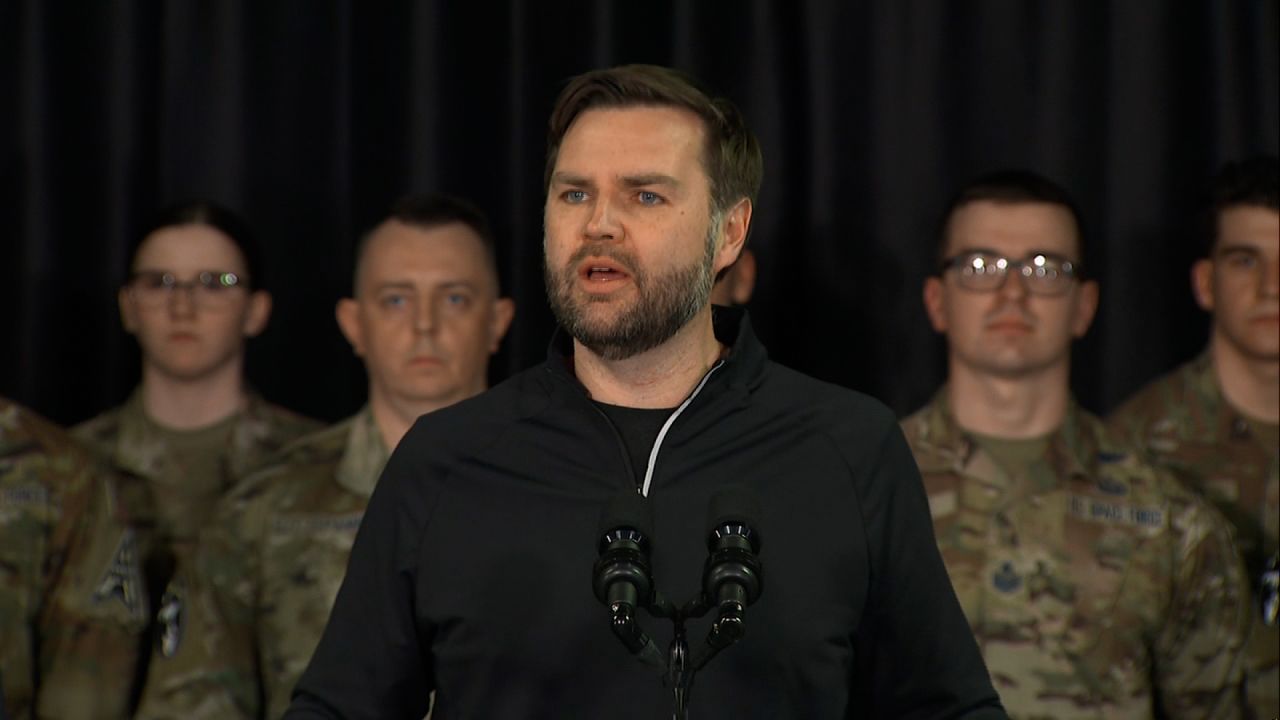

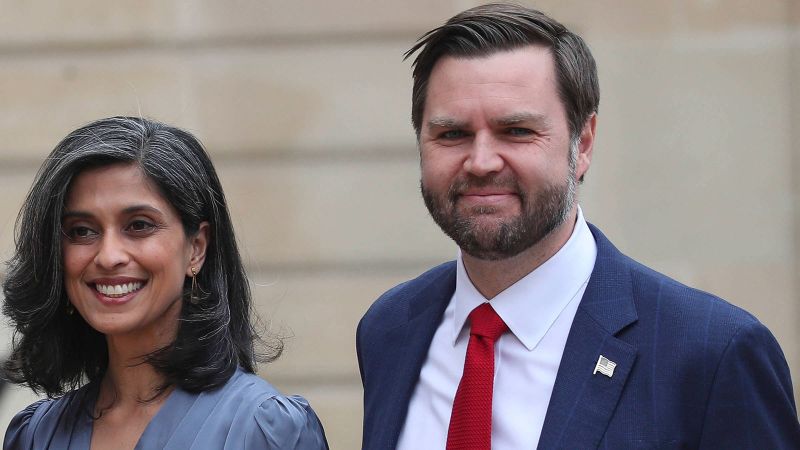

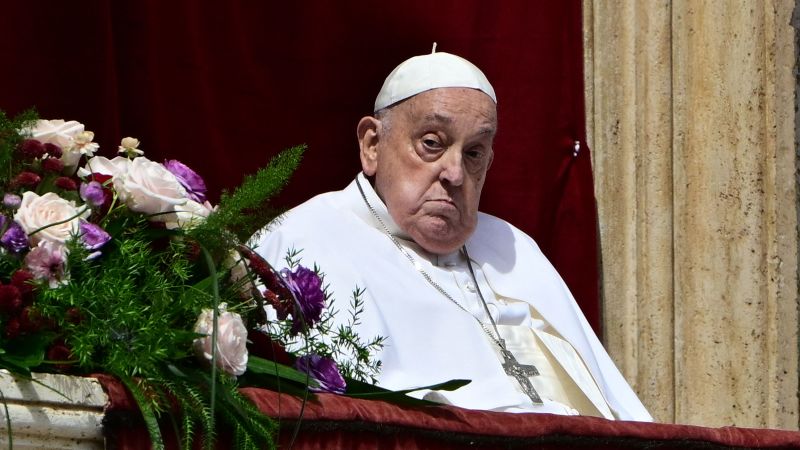

































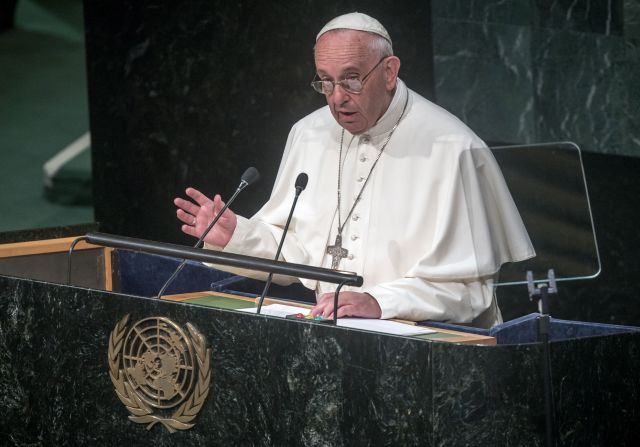 his speech, he urged world leaders to adopt concrete solutions to combat widespread poverty and environmental destruction.” class=”image__dam-img image__dam-img–loading” onload=’this.classList.remove(‘image__dam-img–loading’)’ onerror=”imageLoadError(this)” height=”2095″ width=”3000″ loading=’lazy’/>
his speech, he urged world leaders to adopt concrete solutions to combat widespread poverty and environmental destruction.” class=”image__dam-img image__dam-img–loading” onload=’this.classList.remove(‘image__dam-img–loading’)’ onerror=”imageLoadError(this)” height=”2095″ width=”3000″ loading=’lazy’/>





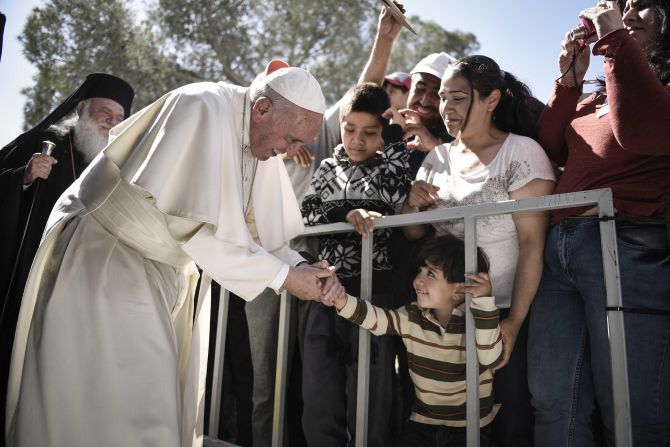 during a visit in which he showed solidarity with migrants fleeing war and poverty. ” class=”image__dam-img image__dam-img–loading” onload=’this.classList.remove(‘image__dam-img–loading’)’ onerror=”imageLoadError(this)” height=”1669″ width=”2500″ loading=’lazy’/>
during a visit in which he showed solidarity with migrants fleeing war and poverty. ” class=”image__dam-img image__dam-img–loading” onload=’this.classList.remove(‘image__dam-img–loading’)’ onerror=”imageLoadError(this)” height=”1669″ width=”2500″ loading=’lazy’/>
 was there to pay tribute to those who died in the Holocaust. ” class=”image__dam-img image__dam-img–loading” onload=’this.classList.remove(‘image__dam-img–loading’)’ onerror=”imageLoadError(this)” height=”1664″ width=”2500″ loading=’lazy’/>
was there to pay tribute to those who died in the Holocaust. ” class=”image__dam-img image__dam-img–loading” onload=’this.classList.remove(‘image__dam-img–loading’)’ onerror=”imageLoadError(this)” height=”1664″ width=”2500″ loading=’lazy’/>




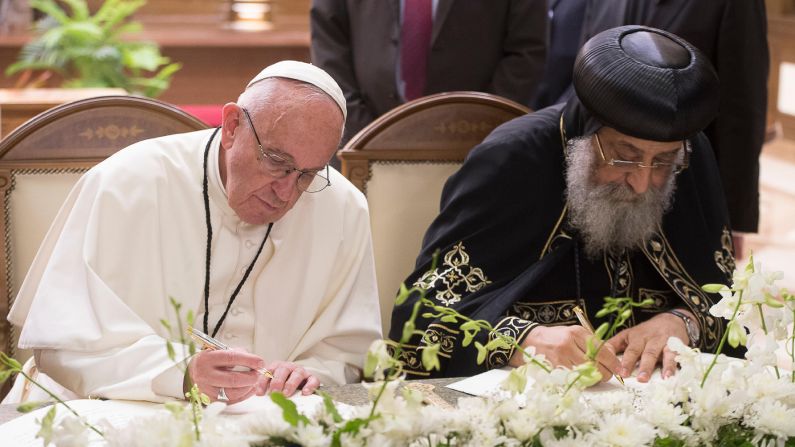 two-day trip to Egypt to forge Muslim-Christian brotherhood and show solidarity with the country’s persecuted Coptic Christian minority.” class=”image__dam-img image__dam-img–loading” onload=’this.classList.remove(‘image__dam-img–loading’)’ onerror=”imageLoadError(this)” height=”1569″ width=”2790″ loading=’lazy’/>
two-day trip to Egypt to forge Muslim-Christian brotherhood and show solidarity with the country’s persecuted Coptic Christian minority.” class=”image__dam-img image__dam-img–loading” onload=’this.classList.remove(‘image__dam-img–loading’)’ onerror=”imageLoadError(this)” height=”1569″ width=”2790″ loading=’lazy’/>
 private audience at the Vatican in May 2017. Joining the President are his wife, Melania, and his daughter Ivanka.” class=”image__dam-img image__dam-img–loading” onload=’this.classList.remove(‘image__dam-img–loading’)’ onerror=”imageLoadError(this)” height=”2966″ width=”5272″ loading=’lazy’/>
private audience at the Vatican in May 2017. Joining the President are his wife, Melania, and his daughter Ivanka.” class=”image__dam-img image__dam-img–loading” onload=’this.classList.remove(‘image__dam-img–loading’)’ onerror=”imageLoadError(this)” height=”2966″ width=”5272″ loading=’lazy’/>







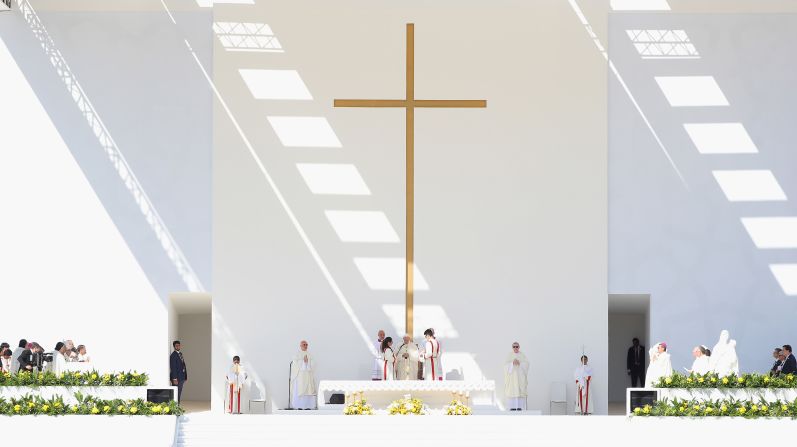 the first time a pope has visited an Arab Gulf state, and it was the first time a pope had celebrated Mass in the Arabian Peninsula, the birthplace of Islam.” class=”image__dam-img image__dam-img–loading” onload=’this.classList.remove(‘image__dam-img–loading’)’ onerror=”imageLoadError(this)” height=”1403″ width=”2500″ loading=’lazy’/>
the first time a pope has visited an Arab Gulf state, and it was the first time a pope had celebrated Mass in the Arabian Peninsula, the birthplace of Islam.” class=”image__dam-img image__dam-img–loading” onload=’this.classList.remove(‘image__dam-img–loading’)’ onerror=”imageLoadError(this)” height=”1403″ width=”2500″ loading=’lazy’/>




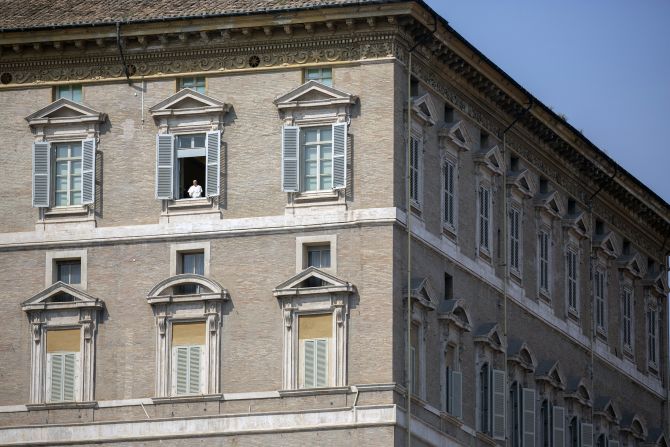 his weekly blessing from the window of his private library in March 2020. St. Peter’s Square is normally swarming with tens of thousands of visitors, but the Vatican was on lockdown because of the coronavirus pandemic.” class=”image__dam-img image__dam-img–loading” onload=’this.classList.remove(‘image__dam-img–loading’)’ onerror=”imageLoadError(this)” height=”1667″ width=”2500″ loading=’lazy’/>
his weekly blessing from the window of his private library in March 2020. St. Peter’s Square is normally swarming with tens of thousands of visitors, but the Vatican was on lockdown because of the coronavirus pandemic.” class=”image__dam-img image__dam-img–loading” onload=’this.classList.remove(‘image__dam-img–loading’)’ onerror=”imageLoadError(this)” height=”1667″ width=”2500″ loading=’lazy’/>

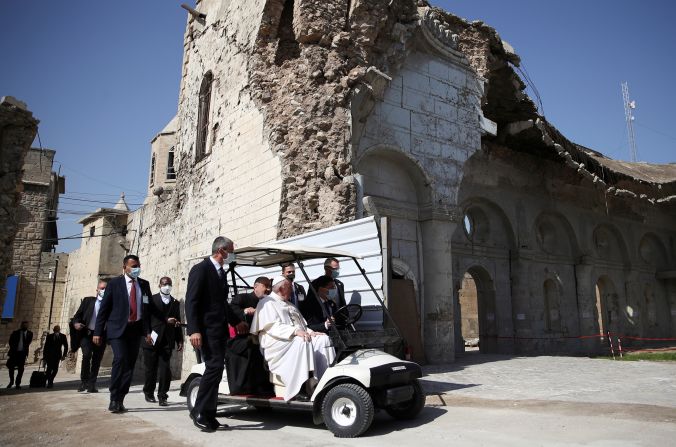 the first-ever papal visit to Iraq, and it was Francis’ first trip outside Italy since the start of the Covid-19 pandemic.” class=”image__dam-img image__dam-img–loading” onload=’this.classList.remove(‘image__dam-img–loading’)’ onerror=”imageLoadError(this)” height=”1654″ width=”2500″ loading=’lazy’/>
the first-ever papal visit to Iraq, and it was Francis’ first trip outside Italy since the start of the Covid-19 pandemic.” class=”image__dam-img image__dam-img–loading” onload=’this.classList.remove(‘image__dam-img–loading’)’ onerror=”imageLoadError(this)” height=”1654″ width=”2500″ loading=’lazy’/>

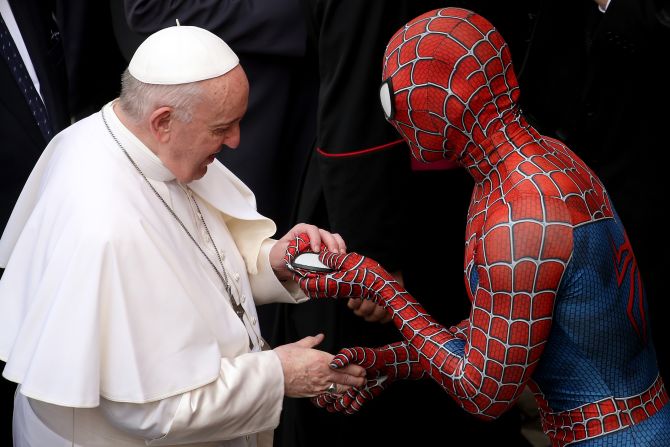 shakes hands with a man dressed as Spider-Man while visiting with people at the Vatican in June 2021. The masked man, who works with sick children in hospitals, also gave a Spider-Man mask to the Pope.” class=”image__dam-img image__dam-img–loading” onload=’this.classList.remove(‘image__dam-img–loading’)’ onerror=”imageLoadError(this)” height=”1667″ width=”2500″ loading=’lazy’/>
shakes hands with a man dressed as Spider-Man while visiting with people at the Vatican in June 2021. The masked man, who works with sick children in hospitals, also gave a Spider-Man mask to the Pope.” class=”image__dam-img image__dam-img–loading” onload=’this.classList.remove(‘image__dam-img–loading’)’ onerror=”imageLoadError(this)” height=”1667″ width=”2500″ loading=’lazy’/>

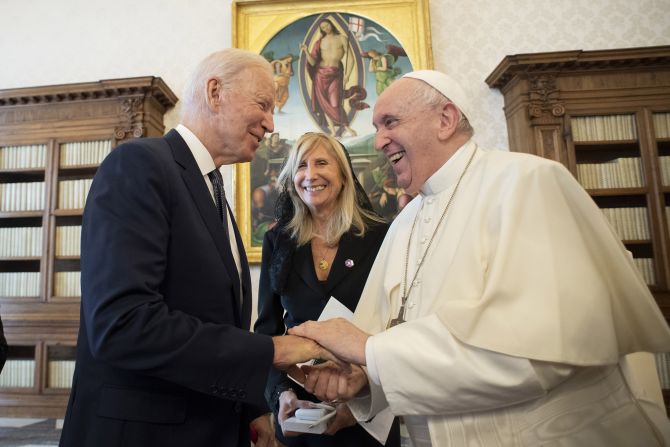 his trip to the Vatican in October 2021. Between them is Italian translator Elisabetta Savigni Ullmann. Challenge coins originated in the military, and this one included the insignia of a Delaware Army National Guard unit that Biden’s son Beau served in. Biden said during his visit that coins are given to “warriors and leaders” and that the pope is “the most significant warrior for peace I’ve ever met.” Biden, a devout lifelong Catholic, met with the Pope for 90 minutes and said he discussed “a lot of personal things” with the pontiff. It was the fourth meeting between Francis and Biden, but their first since Biden became President.” class=”image__dam-img image__dam-img–loading” onload=’this.classList.remove(‘image__dam-img–loading’)’ onerror=”imageLoadError(this)” height=”1667″ width=”2500″ loading=’lazy’/>
his trip to the Vatican in October 2021. Between them is Italian translator Elisabetta Savigni Ullmann. Challenge coins originated in the military, and this one included the insignia of a Delaware Army National Guard unit that Biden’s son Beau served in. Biden said during his visit that coins are given to “warriors and leaders” and that the pope is “the most significant warrior for peace I’ve ever met.” Biden, a devout lifelong Catholic, met with the Pope for 90 minutes and said he discussed “a lot of personal things” with the pontiff. It was the fourth meeting between Francis and Biden, but their first since Biden became President.” class=”image__dam-img image__dam-img–loading” onload=’this.classList.remove(‘image__dam-img–loading’)’ onerror=”imageLoadError(this)” height=”1667″ width=”2500″ loading=’lazy’/>



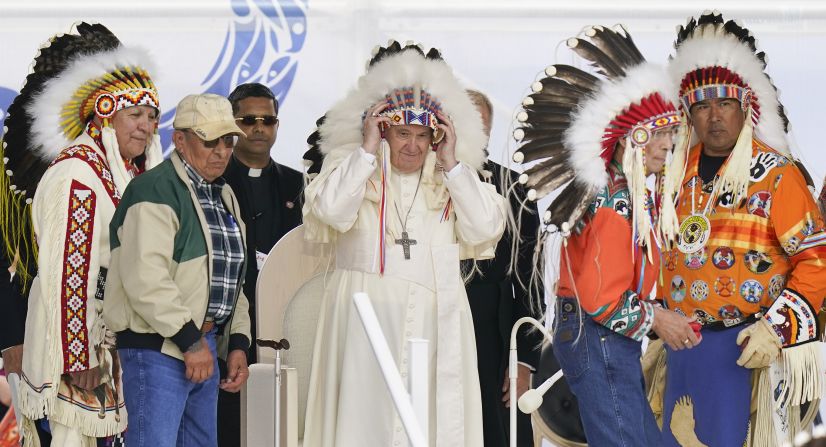 Francis spoke of his “sorrow, indignation and shame” over the Catholic Church’s role in the abuse of Canadian Indigenous children in residential schools. He apologized and promised a “serious investigation” into what happened.” class=”image__dam-img image__dam-img–loading” onload=’this.classList.remove(‘image__dam-img–loading’)’ onerror=”imageLoadError(this)” height=”1973″ width=”3646″ loading=’lazy’/>
Francis spoke of his “sorrow, indignation and shame” over the Catholic Church’s role in the abuse of Canadian Indigenous children in residential schools. He apologized and promised a “serious investigation” into what happened.” class=”image__dam-img image__dam-img–loading” onload=’this.classList.remove(‘image__dam-img–loading’)’ onerror=”imageLoadError(this)” height=”1973″ width=”3646″ loading=’lazy’/>

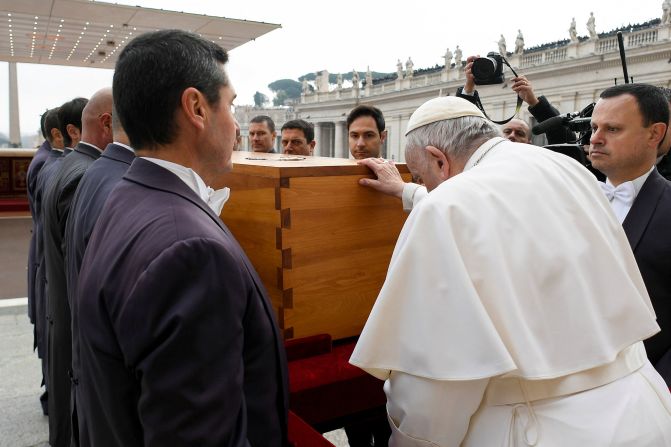 Benedict’s funeral was attended by tens of thousands at St. Peter’s Square.” class=”image__dam-img image__dam-img–loading” onload=’this.classList.remove(‘image__dam-img–loading’)’ onerror=”imageLoadError(this)” height=”2000″ width=”3000″ loading=’lazy’/>
Benedict’s funeral was attended by tens of thousands at St. Peter’s Square.” class=”image__dam-img image__dam-img–loading” onload=’this.classList.remove(‘image__dam-img–loading’)’ onerror=”imageLoadError(this)” height=”2000″ width=”3000″ loading=’lazy’/>
 Francis’ visit to the DRC — the first papal visit since 1985 — was part of a six-day trip that also included South Sudan. In those two countries, Catholics comprise about half of the population and the Church is a key stakeholder in health and education systems as well as in democracy-building efforts. ” class=”image__dam-img image__dam-img–loading” onload=’this.classList.remove(‘image__dam-img–loading’)’ onerror=”imageLoadError(this)” height=”1334″ width=”2000″ loading=’lazy’/>
Francis’ visit to the DRC — the first papal visit since 1985 — was part of a six-day trip that also included South Sudan. In those two countries, Catholics comprise about half of the population and the Church is a key stakeholder in health and education systems as well as in democracy-building efforts. ” class=”image__dam-img image__dam-img–loading” onload=’this.classList.remove(‘image__dam-img–loading’)’ onerror=”imageLoadError(this)” height=”1334″ width=”2000″ loading=’lazy’/>



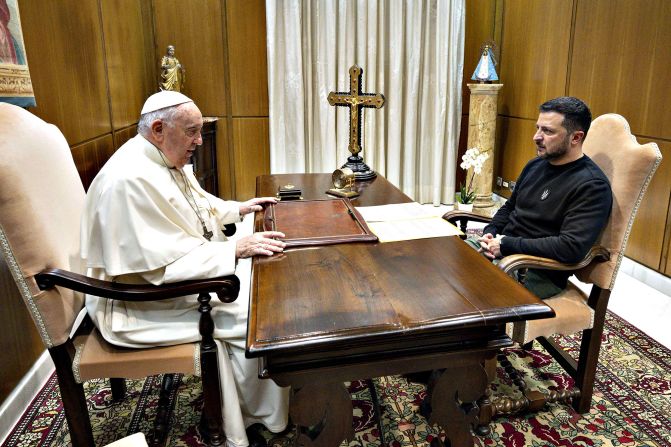 meets with Ukrainian President Volodymyr Zelensky at the Vatican in May 2023. It was the first face-to-face meeting between Zelensky and the Pope since Russia invaded Ukraine in February 2022. The Pope has been outspoken in his support for an end to the war.” class=”image__dam-img image__dam-img–loading” onload=’this.classList.remove(‘image__dam-img–loading’)’ onerror=”imageLoadError(this)” height=”1333″ width=”2000″ loading=’lazy’/>
meets with Ukrainian President Volodymyr Zelensky at the Vatican in May 2023. It was the first face-to-face meeting between Zelensky and the Pope since Russia invaded Ukraine in February 2022. The Pope has been outspoken in his support for an end to the war.” class=”image__dam-img image__dam-img–loading” onload=’this.classList.remove(‘image__dam-img–loading’)’ onerror=”imageLoadError(this)” height=”1333″ width=”2000″ loading=’lazy’/>
 He was on his way to a Rome hospital for abdominal surgery. The procedure was to repair a hernia that the Vatican said was causing “recurrent, painful and worsening” symptoms.” class=”image__dam-img image__dam-img–loading” onload=’this.classList.remove(‘image__dam-img–loading’)’ onerror=”imageLoadError(this)” height=”1333″ width=”2000″ loading=’lazy’/>
He was on his way to a Rome hospital for abdominal surgery. The procedure was to repair a hernia that the Vatican said was causing “recurrent, painful and worsening” symptoms.” class=”image__dam-img image__dam-img–loading” onload=’this.classList.remove(‘image__dam-img–loading’)’ onerror=”imageLoadError(this)” height=”1333″ width=”2000″ loading=’lazy’/>






 working session on artificial intelligence during the G7 summit near Bari, Italy, in June 2024. Francis, the first pope to participate in the summit, is determined to use the soft power of his office to try to ensure that the development of AI serves humanity and does not turn into a 21st-century Frankenstein’s monster.” class=”image__dam-img image__dam-img–loading” onload=’this.classList.remove(‘image__dam-img–loading’)’ onerror=”imageLoadError(this)” height=”1667″ width=”2500″ loading=’lazy’/>
working session on artificial intelligence during the G7 summit near Bari, Italy, in June 2024. Francis, the first pope to participate in the summit, is determined to use the soft power of his office to try to ensure that the development of AI serves humanity and does not turn into a 21st-century Frankenstein’s monster.” class=”image__dam-img image__dam-img–loading” onload=’this.classList.remove(‘image__dam-img–loading’)’ onerror=”imageLoadError(this)” height=”1667″ width=”2500″ loading=’lazy’/>


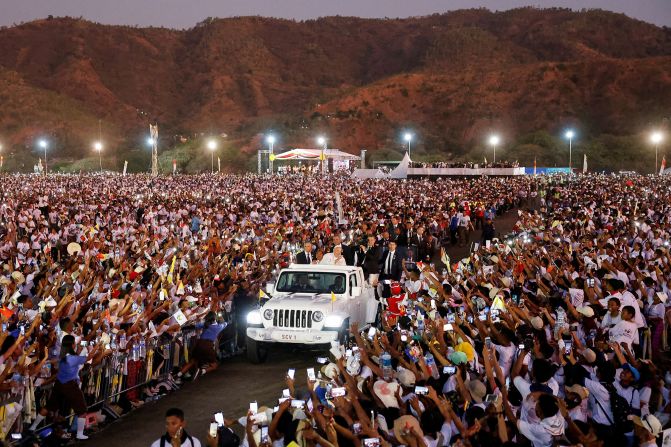 leading a Holy Mass at the Esplanade of Tasi Tolu in Dili, East Timor, on September 10, 2024.
leading a Holy Mass at the Esplanade of Tasi Tolu in Dili, East Timor, on September 10, 2024.


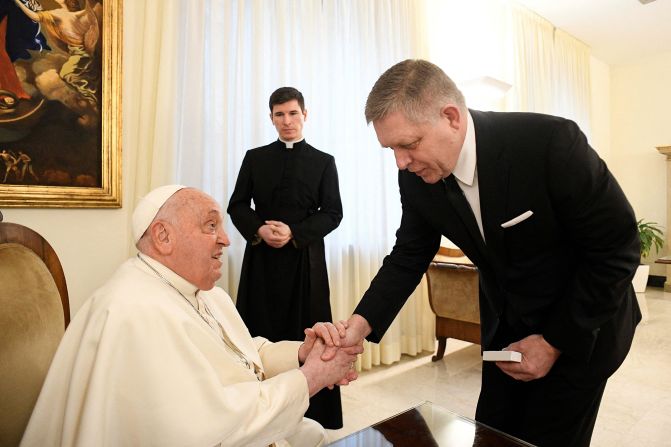 the Pope was admitted to a hospital in Rome. It was later announced that he was battling pneumonia in both of his lungs.” class=”image__dam-img image__dam-img–loading” onload=’this.classList.remove(‘image__dam-img–loading’)’ onerror=”imageLoadError(this)” height=”1333″ width=”2000″ loading=’lazy’/>
the Pope was admitted to a hospital in Rome. It was later announced that he was battling pneumonia in both of his lungs.” class=”image__dam-img image__dam-img–loading” onload=’this.classList.remove(‘image__dam-img–loading’)’ onerror=”imageLoadError(this)” height=”1333″ width=”2000″ loading=’lazy’/>

 he was discharged from the Gemelli Hospital in Rome in March 2025. Though he looked frail and struggled to speak, he addressed the crowd outside the hospital, thanking them and acknowledging one woman in the crowd who was holding flowers. He also gave a blessing, though he appeared to have some difficulty raising his arms.” class=”image__dam-img image__dam-img–loading” onload=’this.classList.remove(‘image__dam-img–loading’)’ onerror=”imageLoadError(this)” height=”1242″ width=”2000″ loading=’lazy’/>
he was discharged from the Gemelli Hospital in Rome in March 2025. Though he looked frail and struggled to speak, he addressed the crowd outside the hospital, thanking them and acknowledging one woman in the crowd who was holding flowers. He also gave a blessing, though he appeared to have some difficulty raising his arms.” class=”image__dam-img image__dam-img–loading” onload=’this.classList.remove(‘image__dam-img–loading’)’ onerror=”imageLoadError(this)” height=”1242″ width=”2000″ loading=’lazy’/>



